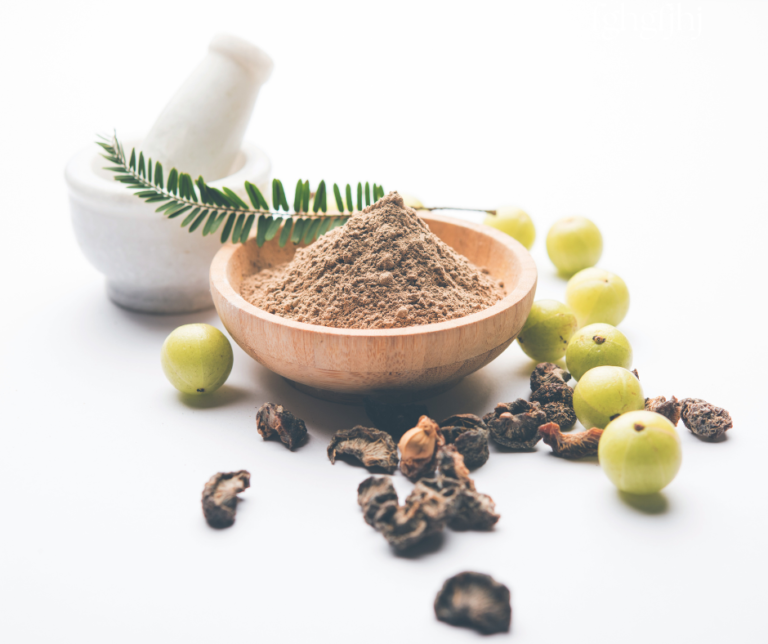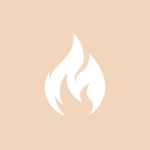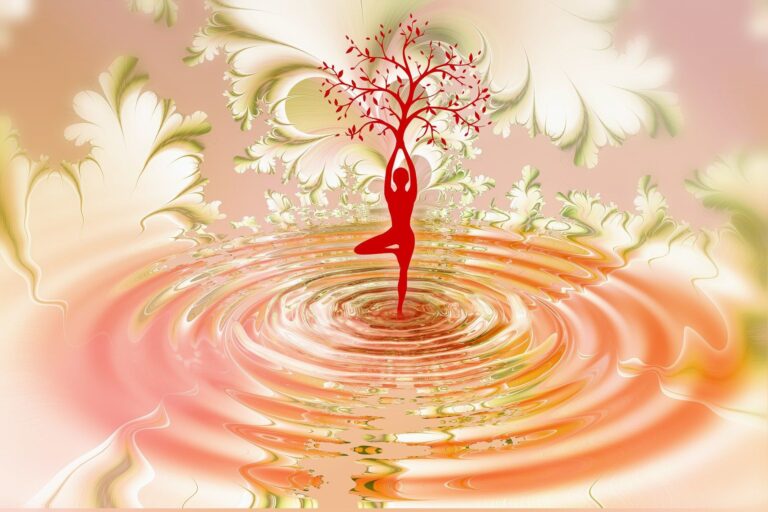Ayurveda

“Ayurveda is not just the science of life it is the science of immortality. It teaches us wellness and harmony of body and mind to take us to our eternal essence as the Self of all.”
~ Dr David Frawley ~
Ayurveda – known as the sister science of yoga is a holistic and ancient system of traditional Indian medicine. It can be translated as the “science and wisdom of life and living” (in Sanskrit, “Ayur” meaning life and “Veda” – “eternal truth”), and works on the holistic principle that the mind and body are inextricably linked. According to Ayurveda an individual is a microcosm – a whole universe within him or herself, where the individual’s existence is indivisible from the total cosmic manifestation.
It is said to go back more than 5,000 years to the ancient yogis, supporting them to balance and purify the physical body so that it can be in optimal condition for yogic practice and in order to attain the higher goals of yoga of reaching higher states of consciousness and bliss.
It works on the premise that everything works in balance and the knowledge and power to thrive and to heal ourselves from disease exists within ourselves.
Ayurveda gives us the tools and knowledge to unlock this power within ourselves, whilst using natural plant based herbal remedies and supplements for healing, with a strong emphasis on prevention. Its’ remedies also take a holistic approach and focus on bringing the mind, body and soul back into balance, and to address the cause of any illness and imbalance rather than simply manage its symptoms.

Our body is a temple… It is a divine vessel and instrument of our soul in this life, housing our “energy body” (koshas’), nadi’s (energy pathways or meridians) and chakra system; it should therefore be taken care accordingly – loved, nourished and nurtured – inside and out. The beautiful thing about living a yogic lifestyle combined with ayurvedic principles is that it really guides us in doing this in the most beneficial of ways. It is a holistic approach which enables us to live our lives fully, allowing us to function and enabling evolution at our fullest potential, on all levels – physical, mental and spiritual.
The Role of Ayurveda in the Modern World
- Personalised & Tailored Healthcare: Ayurveda provides tailored health recommendations based on individual constitutions, promoting personalised wellness strategies.
- Preventive Focus: Emphasising prevention, Ayurveda encourages daily routines (Dinacharya) and seasonal regimens (Ritucharya) to sustain balance and prevent disease.
- An Ayurvedic approach to lifestyle encourages us to align with the rhythms of nature and in turn get connected back with ourselves.
- Holistic Approach & Therapies: Incorporating practices such as yoga, meditation, herbal remedies, and dietary guidelines, Ayurveda addresses the whole person—mind, body, and spirit.
- Mindful Eating: Choosing foods that align with your dosha to promote optimal digestion and energy levels. The right way and timings to eat are also important – so many factors can influence our digestion and assimilation of nutrients from our food.
- Nutrition: The right kind of nutrition to support our body-mind type (constitution), as well as aligning with the seasons, climate etc.
- Daily Routines: Establishing consistent practices and routines, to support overall health.
Stress Management: Incorporating daily yoga and meditation practices, as well as cultivating mindfulness and a sense of awareness to how we go about in the world can calm the mind and strengthen the body.
Core Principles of Ayurveda:
Understanding the Dosha’s

According to Ayurveda, we (just like the universe) are made up of the 5 basic elements (earth, air, fire, water, ether) and these manifest themselves to differing degrees within each of us, which produce the different “doshas”.
Central to Ayurveda is the concept of the three doshas – Vata, Pitta, and Kapha. These doshas are bio-energetic forces that govern our physical and mental processes.
Dosha is a Sanskrit word which can be translated as “that which can cause problems” (literally meaning “fault” or “defect”), and which refers to three forms of energy present in the body and mind.
According to Ayurveda, dosha’s are the energy patterns – a form of biological energy – that exist within all of us, and which govern our thinking and behaviour. The 3 doshas – known as Vata, Pitta, Kapha govern all the physical, mental and psychological systems and everyone has an individual combination of these, although there is usually one dominant dosha in each combination.
Each dosha presents qualities reflecting the different elements:
Vata

- Elements of space and air
- Fall and early winter
- Light, cold, dry, irregular, rough
- Controls movement, blood flow, waste, elimination, breathing
The Vata constitution is predominantly characterised by movement. The vata mind is sensitive and creative. This leads to a slender build and active body functions, such as quick speech.
Pitta

- Elements of fire and water
- Late spring and summer
- Light, oily, hot, sharp, liquid, mobile, and soft
- Controls transformation (digestion and metabolism)
Clarity and heat characterise the pitta mind and body. This leads to an ambitious mind with a sharp intellect, and an athletic build and intense body functions, such as an active metabolism.
Kapha

- Elements of Water and earth
- Later winter / early spring
- Heavy, dense, static, stable, oily, cool, wet, smooth
- Controls lubrication, (joints and lungs)
Structure and stability characterise the kapha mind and body. The kapha mind is patient and deliberate, while the kapha body has a sturdy build and slow-working body functions, such as a slow metabolism.
When the doshas are balanced they protect us – physically and psychologically, however when elements are imbalanced it can lead to disease.
I can carry out an Ayurvedic consultation with you to determine your dosha constitution (prakriti) and current state of imbalance (vikruti) and based on the result, recommend a diet and lifestyle to best support the balance of your specific type.

The 3 "Gunas" - Energy States -
According to Ayurveda there are 3 main energy states known as “gunas” (literally translated as “ropes” or “a string”) that bind us to the physical world. Depending on which of these 3 states predominates one’s mind it will contribute to determining the psychological constitution.
They can be described as three qualities of biological energy plaited or bound together.
These 3 energy states, are aspects of nature or modes of existence which are present in all things in the universe. All three are always present in all things, objects and beings alike, but vary in their relative amounts. They are the foundation of all existence, giving rise to the whole of creation – physical, subtle and causal. They can be described and summarised as follows:-
Sattva (essence)
- Neutral
- State of equilibrium and balance
- Conducive to purity, truth, creativity, happiness and knowledge
- Characteristics of calmness, spirituality, quiet, intelligence and health consciousness.
Rajas (movement)
- Kenetic energy, Active
- Passion
- Restlessness, aggression, effort
- Ambition, drive, ego, perfectionism
The nature of Rajas is of attraction, longing and attachment. Rajas strongly binds us to the fruits of our work.
To reduce rajas, avoid rajasic foods, over exercising, over work, loud music, excessive thinking and excessive consumption of material goods.
Tamas (Inertia)
• Inertia – restfulness
• Dullness, heaviness, materialistic, self-interested, depressed
• Lazy, materialistic, bad humoured
Tamas manifests from ignorance and deludes all beings from their spiritual truths. To reduce tamas, avoid tamasic foods, over sleeping, over eating, inactivity, passivity and fearful situations.
So we can see that the balance of these gunas’ is present all around us and what we choose to immerse ourselves in and consume on a daily basis will affect the balance of these energy states within us.
As humans we have the unique ability to consciously alter the levels of the gunas in our bodies and minds – we can literally encourage their increase or decrease. A guna can be increased or decreased through the interaction and influence of external objects, lifestyle practices and thoughts.
We are, literally what we eat. Our bodies are working to replace billions of cells every day — and using the foods we consume as the source of that energy. All that we eat and its nutritional content directly determines the composition of our cell membranes, bone marrow, blood, hormones, tissue, organs, skin, and hair. Studies have even shown that what we eat can determine the composition of a person’s genes and DNA.
The purification of the physical body and its health, wellness and vitality is an essential first stage of any spiritual practice and process.
I strongly promote sticking to a vegetarian, Yogic, sattvic diet as much as possible for healthy eating and living.

According to Ayurveda “You are what energy you eat” – Any plant-based food you consume in its freshest, purest form contains energy from the sun, and that energy means that it vibrates at higher frequency, is nutritionally more beneficial – benefiting both physical and spiritual health.
Similarly Ayurveda teaches us that “Your diet is not only what you eat” – Therefore, be conscious of what you expose yourself to in other areas. It is called a “news feed” for a reason! Be mindful of what you watch, what you read, the people you interact with, how much time you spend on social media. Be mindful of the things you put into your body, emotionally, spiritually and physically… They all carry a vibration – which if you allow it to will interact and have an effect on your own.

For More Detailed Guidance On Ayurvedic Principles For Healthy Living, Diet, Helpful Tips Suggestions and Recipe ideas.
Purchase The E Booklet – “Ayurveda & Yogic Lifestyle, Principles for Living a Healthy Life
Or
Contact Me For An Ayurvedic Consultation

